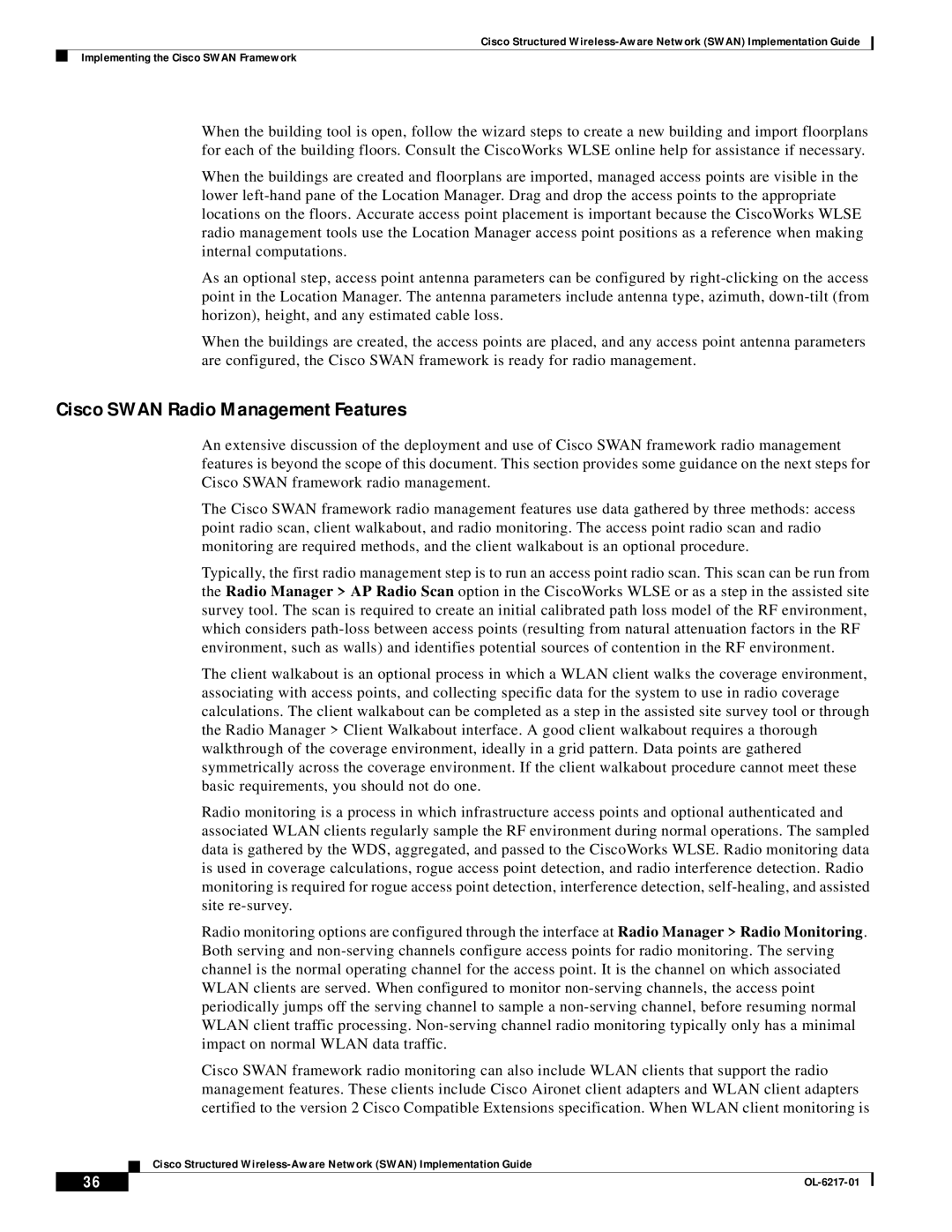
Cisco Structured
Implementing the Cisco SWAN Framework
When the building tool is open, follow the wizard steps to create a new building and import floorplans for each of the building floors. Consult the CiscoWorks WLSE online help for assistance if necessary.
When the buildings are created and floorplans are imported, managed access points are visible in the lower
As an optional step, access point antenna parameters can be configured by
When the buildings are created, the access points are placed, and any access point antenna parameters are configured, the Cisco SWAN framework is ready for radio management.
Cisco SWAN Radio Management Features
An extensive discussion of the deployment and use of Cisco SWAN framework radio management features is beyond the scope of this document. This section provides some guidance on the next steps for Cisco SWAN framework radio management.
The Cisco SWAN framework radio management features use data gathered by three methods: access point radio scan, client walkabout, and radio monitoring. The access point radio scan and radio monitoring are required methods, and the client walkabout is an optional procedure.
Typically, the first radio management step is to run an access point radio scan. This scan can be run from the Radio Manager > AP Radio Scan option in the CiscoWorks WLSE or as a step in the assisted site survey tool. The scan is required to create an initial calibrated path loss model of the RF environment, which considers
The client walkabout is an optional process in which a WLAN client walks the coverage environment, associating with access points, and collecting specific data for the system to use in radio coverage calculations. The client walkabout can be completed as a step in the assisted site survey tool or through the Radio Manager > Client Walkabout interface. A good client walkabout requires a thorough walkthrough of the coverage environment, ideally in a grid pattern. Data points are gathered symmetrically across the coverage environment. If the client walkabout procedure cannot meet these basic requirements, you should not do one.
Radio monitoring is a process in which infrastructure access points and optional authenticated and associated WLAN clients regularly sample the RF environment during normal operations. The sampled data is gathered by the WDS, aggregated, and passed to the CiscoWorks WLSE. Radio monitoring data is used in coverage calculations, rogue access point detection, and radio interference detection. Radio monitoring is required for rogue access point detection, interference detection,
Radio monitoring options are configured through the interface at Radio Manager > Radio Monitoring. Both serving and
Cisco SWAN framework radio monitoring can also include WLAN clients that support the radio management features. These clients include Cisco Aironet client adapters and WLAN client adapters certified to the version 2 Cisco Compatible Extensions specification. When WLAN client monitoring is
Cisco Structured
36 |
| |
|
